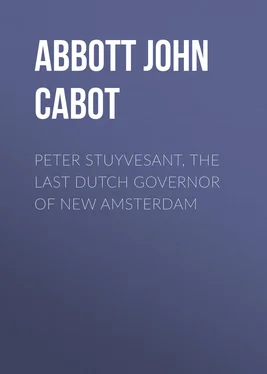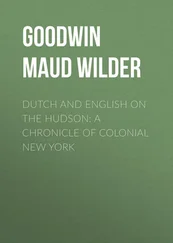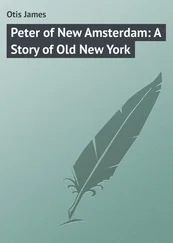John Abbott - Peter Stuyvesant, the Last Dutch Governor of New Amsterdam
Здесь есть возможность читать онлайн «John Abbott - Peter Stuyvesant, the Last Dutch Governor of New Amsterdam» — ознакомительный отрывок электронной книги совершенно бесплатно, а после прочтения отрывка купить полную версию. В некоторых случаях можно слушать аудио, скачать через торрент в формате fb2 и присутствует краткое содержание. Жанр: foreign_prose, История, foreign_edu, foreign_antique, на английском языке. Описание произведения, (предисловие) а так же отзывы посетителей доступны на портале библиотеки ЛибКат.
- Название:Peter Stuyvesant, the Last Dutch Governor of New Amsterdam
- Автор:
- Жанр:
- Год:неизвестен
- ISBN:нет данных
- Рейтинг книги:3 / 5. Голосов: 1
-
Избранное:Добавить в избранное
- Отзывы:
-
Ваша оценка:
- 60
- 1
- 2
- 3
- 4
- 5
Peter Stuyvesant, the Last Dutch Governor of New Amsterdam: краткое содержание, описание и аннотация
Предлагаем к чтению аннотацию, описание, краткое содержание или предисловие (зависит от того, что написал сам автор книги «Peter Stuyvesant, the Last Dutch Governor of New Amsterdam»). Если вы не нашли необходимую информацию о книге — напишите в комментариях, мы постараемся отыскать её.
Peter Stuyvesant, the Last Dutch Governor of New Amsterdam — читать онлайн ознакомительный отрывок
Ниже представлен текст книги, разбитый по страницам. Система сохранения места последней прочитанной страницы, позволяет с удобством читать онлайн бесплатно книгу «Peter Stuyvesant, the Last Dutch Governor of New Amsterdam», без необходимости каждый раз заново искать на чём Вы остановились. Поставьте закладку, и сможете в любой момент перейти на страницу, на которой закончили чтение.
Интервал:
Закладка:
John S. C. Abbott
Peter Stuyvesant, the Last Dutch Governor of New Amsterdam
PREFACE
It is impossible to understand the very remarkable character and career of Peter Stuyvesant, the last, and by far the most illustrious, of the Dutch governors of New Amsterdam, without an acquaintance with the early history of the Dutch colonies upon the Hudson and the Delaware. The Antiquarian may desire to look more fully into the details of the early history of New York. But this brief, yet comprehensive narrative, will probably give most of the information upon that subject, which the busy, general reader can desire.
In this series of " The Pioneers and Patriots of America ," the reader will find, in the "Life of De Soto," a minute description of the extreme south and its inhabitants, when the Mississippi rolled its flood through forests which the foot of the white man had never penetrated. "Daniel Boone" conducts us to the beautiful streams and hunting grounds of Kentucky, when the Indian was the sole possessor of those sublime solitudes. In the "Life of Miles Standish, the Puritan Captain," we are made familiar with that most wonderful of all modern stories, the settlement of New England. "Peter Stuyvesant" leads us to the Hudson, from the time when its majestic waters were disturbed only by the arrowy flight of the birch canoe, till European colonization had laid there the foundations of one of the most flourishing cities on this globe.
In these Histories the writer has spared no labor in gathering all the information in his power, respecting those Olden Times, now passing so rapidly into oblivion.
JOHN S. C. ABBOTT.CHAPTER I.
DISCOVERY OF THE HUDSON RIVER
The Discovery of America.—Colonies.—The Bay of New York.—Description of the Bay.—Voyage of Sir Henry Hudson.—Discovery of the Delaware.—The Natives.—The Boat Attacked.—Ascending the Hudson.—Escape of the Prisoners.—The Chiefs Intoxicated.—The Return.—The Village at Castleton.—The Theft and its Punishment.—The Return to England.
On the 12th of October, 1492, Christopher Columbus landed upon the shores of San Salvador, one of the West India islands, and thus revealed to astonished Europe a new world. Four years after this, in the year 1496, Sebastian Cabot discovered the continent of North America. Thirty-three years passed away of many wild adventures of European voyagers, when, in the year 1539, Ferdinand de Soto landed at Tampa Bay, in Florida, and penetrating the interior of the vast continent, discovered the Mississippi River. Twenty-six years more elapsed ere, in 1565, the first European colony was established at St. Augustine, in Florida.
In the year 1585, twenty years after the settlement of St. Augustine, Sir Walter Raleigh commenced his world-renowned colony upon the Roanoke. Twenty-two years passed when, in 1607, the London Company established the Virginia Colony upon the banks of the James river.
In the year 1524, a Florentine navigator by the name of Jean de Verrazano, under commission of the French monarch, Francis I., coasting northward along the shores of the continent, entered the bay of New York. In a letter to king Francis I., dated July 8th, 1524, he thus describes the Narrows and the Bay:
"After proceeding one hundred leagues, we found a very pleasant situation among some steep hills, through which a very large river, deep at its mouth, forced its way to the sea. From the sea to the estuary of the river, any ship heavily laden might pass, with the help of the tide, which rises eight feet. But as we were riding at anchor, in a good berth, we would not venture up in our vessel without a knowledge of the mouth. Therefore we took the boat, and entering the river, we found the country, on its banks, well peopled, the inhabitants not much differing from the others, being dressed out with the feathers of birds of various colors.
"They came towards us with evident delight, raising loud shouts of admiration, and showing us where we could most securely land with our boat. We passed up this river about half a league, when we found it formed a most beautiful lake three leagues in circuit, upon which they were rowing thirty or more of their small boats, from one shore to the other, filled with multitudes who came to see us. All of a sudden, as is wont to happen to navigators, a violent contrary wind blew in from the sea, and forced us to return to our ship, greatly regretting to leave this region which seemed so commodious and delightful, and which we supposed must also contain great riches, as the hills showed many indications of minerals."
In the year 1609, a band of Dutch merchants, called the East India Company, fitted out an expedition to discover a northeast passage to the Indies. They built a vessel of about eighty tons burden, called the Half Moon, and manning her with twenty sailors, entrusted the command to an Englishman, Henry Hudson. He sailed from the Texel in his solitary vessel, upon this hazardous expedition, on the 6th of April, 1609. Doubling North Cape amid storms and fog and ice, after the rough voyage of a month, he became discouraged, and determined to change his plan and seek a northwest passage.
Crossing the Atlantic, which, in those high latitudes, seems ever to be swept by storms, he laid in a store of codfish on the banks of Newfoundland, and, on the 17th of July, ran his storm-shattered bark into what is now known as Penobscot Bay, on the coast of Maine. Here he found the natives friendly. He had lost his foremast in a storm, and remained at this place a week, preparing a new one. He had heard in Europe that there was probably a passage through the unexplored continent, to the Pacific ocean, south of Virginia. Continuing his voyage southward, he passed Cape Cod, which he supposed to be an island, and arrived on the 18th of August at the entrance of Chesapeake Bay. He then ran along the coast in a northerly direction and entered a great bay with rivers, which he named South River, but which has since received the name of the Delaware.
Still following the coast, he reached the Highlands of Neversink, on the 2d of September, and at three o'clock in the afternoon of the same day, came to what then seemed to him to be the mouths of three large rivers. These were undoubtedly the Raritan, the Narrows, and Rockaway Inlet. After careful soundings he, the next morning, passed Sandy Hook and anchored in the bay at but two cables' length from the shore. The waters around him were swarming with fish. The scenery appeared to him enchanting. Small Indian villages were clustered along the shores, and many birch canoes were seen gliding rapidly to and fro, indicating that the region was quite densely populated, and that the natives were greatly agitated if not alarmed by the strange arrival.
Soon several canoes approached the vessel, and the natives came on board, bringing with them green tobacco and corn, which they wished to exchange for knives and beads. Many vessels, engaged in fishing, had touched at several points on the Atlantic coast, and trafficked with the Indians. The inhabitants of this unexplored bay had heard of these adventurers, of the wonders which they brought from distant lands, and they were in a state of great excitement, in being visited in their turn.
The bay was fringed with the almost impenetrable forest. Here and there were picturesque openings, where Indian villages, in peaceful beauty, were clustered in the midst of the surrounding foliage. The natives were dressed in garments of deer skin, very softly tanned, hanging gracefully about their persons, and often beautifully ornamented. Many of them wore mantles of gorgeously-colored feathers, quite artistically woven together; and they had also garments of rich furs.
The following morning a party from the vessel landed, in a boat, on the Jersey shore. They were received with great hospitality by the natives, who led them into their wigwams, and regaled them with dried currants, which were quite palatable. As they had no interpreters, they could only communicate with each other by signs. They found the land generally covered with forest trees, with occasional meadows of green grass, profusely interspersed with flowers, which filled the air with fragrance.
Читать дальшеИнтервал:
Закладка:
Похожие книги на «Peter Stuyvesant, the Last Dutch Governor of New Amsterdam»
Представляем Вашему вниманию похожие книги на «Peter Stuyvesant, the Last Dutch Governor of New Amsterdam» списком для выбора. Мы отобрали схожую по названию и смыслу литературу в надежде предоставить читателям больше вариантов отыскать новые, интересные, ещё непрочитанные произведения.
Обсуждение, отзывы о книге «Peter Stuyvesant, the Last Dutch Governor of New Amsterdam» и просто собственные мнения читателей. Оставьте ваши комментарии, напишите, что Вы думаете о произведении, его смысле или главных героях. Укажите что конкретно понравилось, а что нет, и почему Вы так считаете.












